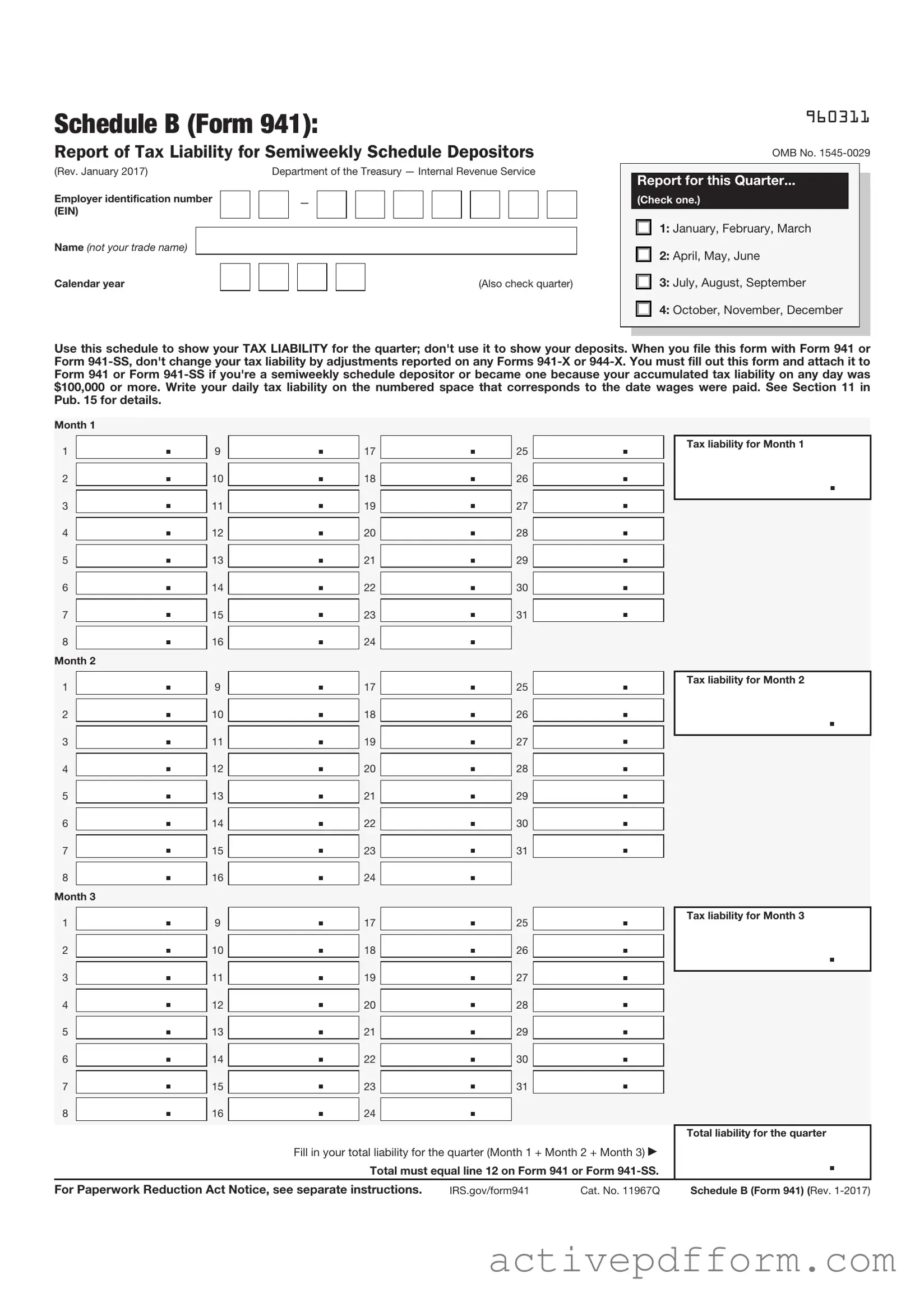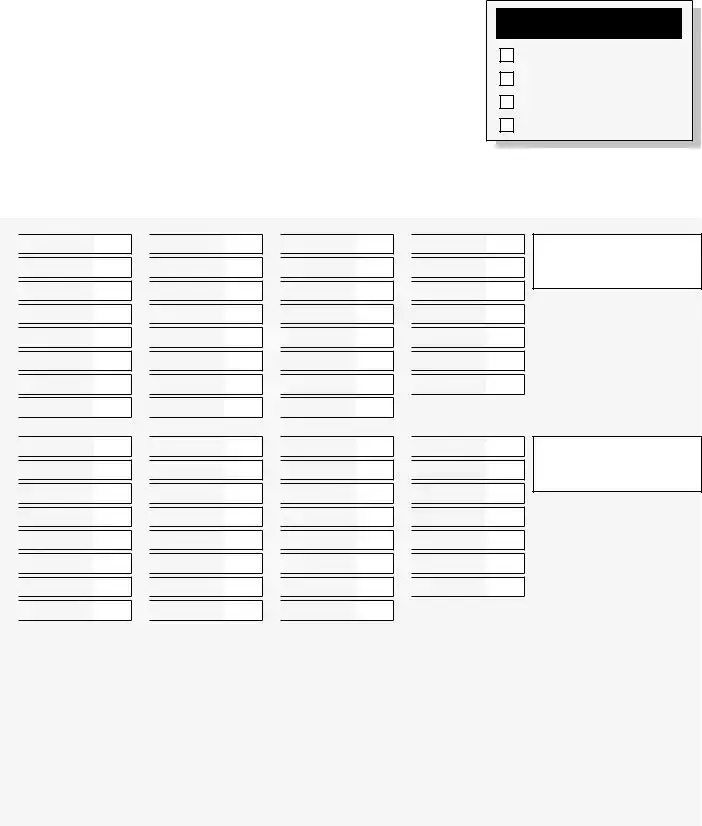What is the IRS Schedule B (Form 941)?
The IRS Schedule B (Form 941) is a form that employers use to report their tax liabilities for federal income tax withholding and Social Security and Medicare taxes. It is specifically designed for employers who have a significant amount of payroll tax liability. This form provides a detailed breakdown of the employer's tax obligations for each quarter of the year. It is typically filed alongside Form 941, which is the Employer's Quarterly Federal Tax Return.
Who needs to file Schedule B (Form 941)?
Employers who report a total tax liability of $100,000 or more during a deposit period must file Schedule B (Form 941). This includes those who have a large payroll or those who have had to make adjustments to their tax liabilities. Even if an employer does not owe taxes at the time of filing, they may still need to complete this schedule if they meet the liability threshold.
When is Schedule B (Form 941) due?
Schedule B (Form 941) is due on the same schedule as Form 941. Employers must file Form 941 quarterly, and the due dates are typically the last day of the month following the end of each quarter. For example, for the first quarter ending March 31, the form is due by April 30. It is essential to file on time to avoid penalties and interest on any unpaid taxes.
How do I complete Schedule B (Form 941)?
To complete Schedule B, employers need to provide information about their payroll tax liabilities. This includes the total amount of taxes owed for each month in the quarter. Employers will also need to indicate any adjustments made during the quarter. The form requires careful attention to detail, as inaccuracies can lead to penalties. It's advisable to refer to the instructions provided by the IRS for specific guidance on filling out the form correctly.
What happens if I don’t file Schedule B (Form 941) when required?
If an employer fails to file Schedule B (Form 941) when required, they may face significant penalties. The IRS can impose fines based on the amount of tax owed, and interest may accrue on any unpaid taxes. Additionally, failing to file can lead to further scrutiny from the IRS, which could result in audits or additional penalties. It is crucial for employers to stay compliant with all filing requirements to avoid these issues.


 .
. .
. .
. .
. .
. .
. .
. .
. .
. .
. .
. .
. .
. .
. .
. .
. .
. .
. .
. .
. .
. .
. .
. .
. .
. .
. .
. .
. .
. .
. .
. .
. .
. .
. .
. .
. .
. .
. .
. .
. .
. .
. .
. .
. .
. .
. .
. .
. .
. .
. .
. .
. .
. .
. .
. .
. .
. .
. .
. .
. .
. .
.